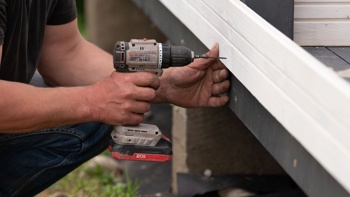Getting rid of E-waste
Oh, we love our phone and laptops, our toasters, blenders, vacuums, hairdryers, smoke detectors and everything that plugs in. We couldn’t live life without them! They unfortunately aren’t necessarily made to last a long time, and at the end of their lives they are all e-waste - you can’t put any of these in your recycling and shouldn’t put them in your normal rubbish. This is obvious with the larger items like TVs and washing machines , but smaller items need careful disposal as well.
We are looking at around 80,000 tonnes of e-waste generated each year and only about two percent is recycled. This is one of the highest per capita amounts in the world. Also New Zealand is one of the only countries in the OEDC without a national e-waste scheme.
The Ministry for the Environment has an initiative to create a product stewardship process for electronic waste, with results expected later this year. The insides of electronics are full of toxic materials. A Cathode Ray tube TV or monitor may contain up to 3kg of lead.
With the rise of technology, we are seeing more fires from Lithium-Ion batteries. When these get compacted in the rubbish or recycling truck, the casing breaks, and the battery mixes with whatever else is in the truck. The same thing can happen with car parts or gas canisters from barbeques. This puts everyone including the fire service in danger.
But electronics are also full of treasure, the rare metals that products and the new generation batteries need. Specialty recyclers are growing their capacity to take electronic waste in New Zealand. There are lots of places that are eager to get your computer or TV screen, refurbish it, and pass it on to a small business, school, or charity in need. They help keep these materials out of landfill, which also lessens the demand for new rare earth materials. Items that can no longer be re-used are dismantled by recycling technicians. The components are separated and graded as either general scrap metals or e-scrap. All e-scrap is exported under Environmental Protection Agency permits to facilities in Asia and Europe to be return into base elements to be used again.
The other way to look at this issue is through product guardianship. In a circular economy there is no waste. So products are designed so that the manufacturers will welcome them back for the valuable components inside. This philosophy would completely change how we design our products. Some European countries are looking at only ever renting out large appliances, then the companies know they will take them back and make sure they are useful when they return.
Auckland-based company Computer Recycling is hosting 30+ e-waste drop-off days around the city in 2021, providing opportunities for locals to divert their e-waste from ending up in local landfills including one today (Saturday 17 April). Computer Recyclingis working with neighbourhood group to facilitate over 30 of these collection days – dubbed “CR E-days”.
LISTEN TO AUDIO ABOVE
Take your Radio, Podcasts and Music with you










